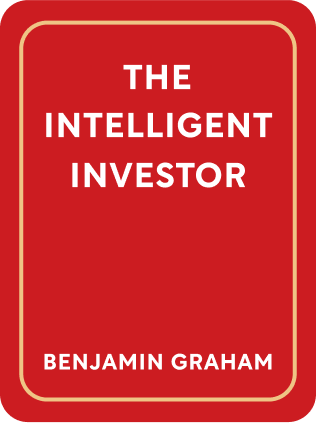

This article is an excerpt from the Shortform book guide to "The Intelligent Investor" by Benjamin Graham. Shortform has the world's best summaries and analyses of books you should be reading.
Like this article? Sign up for a free trial here .
What’s an investment case study? Are there case studies out there that can help you understand failed investments?
An investment case study can help you understand what went wrong with certain investments. Sometimes, investments fail despite all your research. Other times, a failed investment is predictable.
Read these investment case study examples and what they can teach you about certain investments.
What Is an Investment Case Study?
When choosing investments, it’s as important to avoid overhyped companies on the brink of failure as it is to choose bargain stocks. Graham shows four case studies of companies that had astronomical stock prices but showed clear warning signs of their impending demise. Moreover, to detect their weak conditions, you wouldn’t have needed to understand their intricate workings—you could have used the basic financial metrics we’ve covered already. To see these metrics in action, you can examine an investment case study.
Then, in his commentary, Zweig adds modern examples of each archetype.
The four archetypes shown are:
- A giant company with signs of poor operating performance
- An empire-building conglomerate that grows unwisely through acquisition
- An acquisition where a small company absorbs a giant
- A company with little substance riding a speculative wave
Investment Case Study Archetype 1: A Poorly Operating Giant
This is one example of an investment case study that shows how a large company can fail.
Penn Central
In 1970, the nation’s largest railroad company Penn Central filed for bankruptcy. This was shocking to the finance world, but Graham argues its demise could have been predicted well in advance:
- The company had not paid income taxes for 11 years, yet it was regularly reporting earnings. How would this have been possible?
- The standard interest coverage ratio (the ratio of earnings to interest charges) for railroads was 5:1 before taxes. In 1967 and 1968, Penn Central showed a ratio of just 1.9.
- It was operationally inefficient. Railroad expenses made up 47.5% of its income in 1968, compared to 35.2% for a more efficient competitor.
- Its accounting was fishy, with strange transactions that didn’t make much sense. Graham declines to go into detail.
Graham argues that anyone paying attention to the simple fundamentals of the business could have noticed that Penn Central was in deep trouble. At that time, they should have pulled their stock and bonds out of the company and exchanged them for more robust competitors.
Investment Case Study Archetype 2: An Empire-Builder that Falters
This is another example of an investment case study where an empire collapses. Note how it’s different from the above.
Ling-Temco-Vought
Ling-Temco-Vought was a conglomerate involved in industries as wide as aerospace, sporting goods, and pharmaceuticals.
(Shortform note: The conglomerate began with a young entrepreneur James Ling, who took his electrical contracting business public in 1955. From that point he began a blistering pace of acquisitions in a staggering array of industries. Taking advantage of low interest rates in the 1960s, Ling-Temco-Vought raised huge sums of debt to fund acquisitions. The strategy was relatively simple—as long as an acquired company’s earnings could cover the interest on debt used to acquire the company, the acquisition was profitable.)
The nominal growth in the company was staggering—revenue began at $7 million in 1958, grew twenty-fold within 2 years to $143 million, then grew again twenty-fold again to $2.8 billion by 1968.
Yet warning signs appeared through this steady rise:
- The acquisitions required debt, which ballooned to $1.5 billion by 1969. This was a near-record amount across all companies in history (Shortform note: On the financial tables shown, its assets to liabilities ratio generally remained between 1.0 and 2.0.)
- Its ratio of earnings to interest didn’t pass the conservative benchmark of 5.
- Its market price in 1967 was a remarkable 22 times net tangible assets.
In 1969, at its peak in sales, Ling-Temco-Vought reported a loss of $70 million (it had earned $124 million before taxes and interest, but interest charges were $122 million, swallowing up nearly all the profits; additional taxes and special items caused further losses).
Over the next few years, the stock price fell from its peak by over 95%.
(Shortform note: Graham doesn’t comment on the company’s fundamental business issues. It appears Ling-Temco-Vought suffered from:
- A general market downturn in 1970
- Investors’ realization that its acquired companies weren’t growing any faster as part of the conglomerate than before they were acquired, thus weakening the conglomeration strategy
- Antitrust concerns of conglomerates)
Archetype 3: A Tiny Company Swallows a Giant
This third investment case study shows what can go wrong when a large company takes over a smaller one.
NVF and Sharon Steel
In 1968, NVF, a company with $31 million in sales, acquired a company seven times its size: Sharon Steel Corp, a company with $219 million in sales.
To fund this acquisition, NVF issued $102 million of bonds with stock warrants attached. Warning signs then appeared:
- Its financial reporting showed incomprehensible entries relating to debt expenses, cost of investment in Sharon Steel, and fair market value of warrants. The overall effect was to disguise the severity of the debt and of the dilution from the stock warrants.
- The newly issued bonds soon traded at a steep discount (42 cents on the dollar), suggesting the market had deep concerns about its financial position.
- In 1969 Sharon Steel adjusted its calculations for pension costs and lowered depreciation rates, thus artificially boosting earnings by $1 per share.
(Shortform note: Graham doesn’t discuss the stock performance of NVF, but Sharon Steel began defaulting on debt in 1985 and filed for bankruptcy in 1987. The chairman of NVF, Victor Posner, was a famed “corporate raider” and pioneer of leveraged buyout and hostile takeover strategies.)
Archetype 4: An Illusory Company Riding a Speculative Wave
Finally, this last type of investment case study shows how stocks can damage company value.
eToys
In 1999, Internet retailer eToys went public at a valuation of $7.8 billion. It was a tiny company with sales of just $30 million and assets of $31 million; in comparison, Toys “R” Us was worth $2 billion less at $5.6 billion, with 70-fold more revenue ($2.1 billion) and total assets of $8 billion.
How did this make any sense? eToys showed an astounding growth rate of 4,261% in the past year. However, as Graham has cautioned us, smaller companies are able to grow at astounding rates that they cannot sustain (a 42-fold growth in revenue suggests eToys had just $700,000 in revenue the previous year).
Even worse, while it showed revenue of $30 million, eToys suffered a loss of an equal size, at $31 million—it was losing a dollar for every dollar it brought in.
In 2001, eToys filed for bankruptcy, and its stock fell from $86 per share to zero.

———End of Preview———
Like what you just read? Read the rest of the world's best book summary and analysis of Benjamin Graham's "The Intelligent Investor" at Shortform .
Here's what you'll find in our full The Intelligent Investor summary :
- Key advice from what Warren Buffett considers the "best book about investing"
- The 2 major indicators you should use for evaluating stocks
- How you can use aggressive or defensive investing strategies






